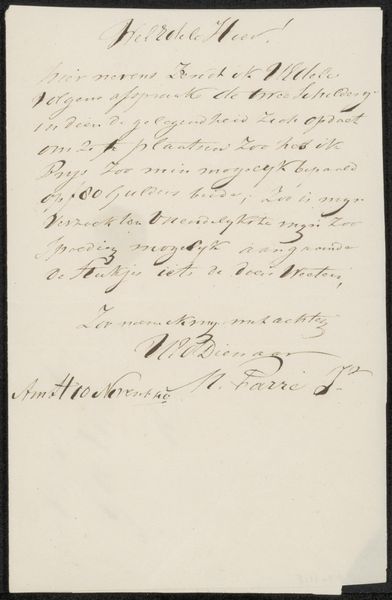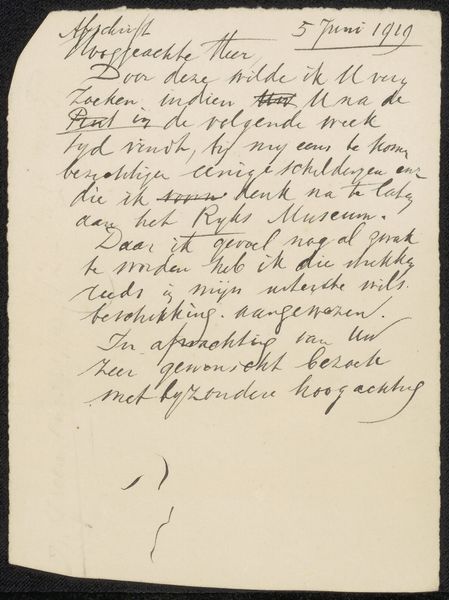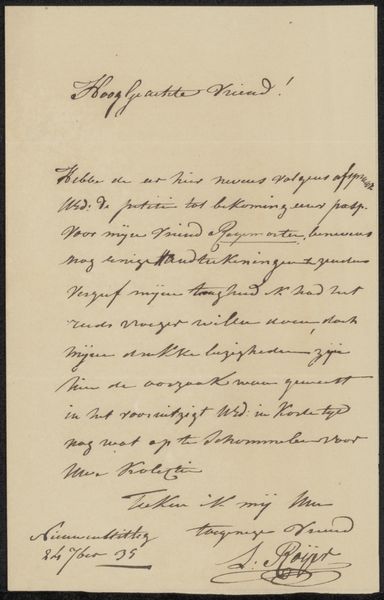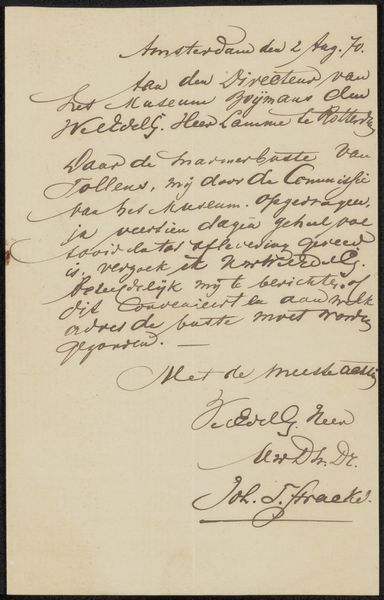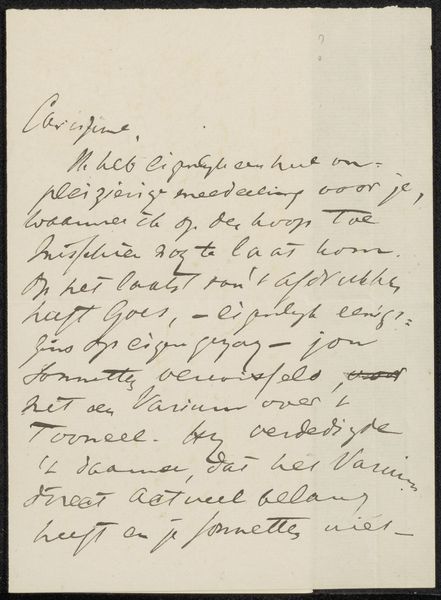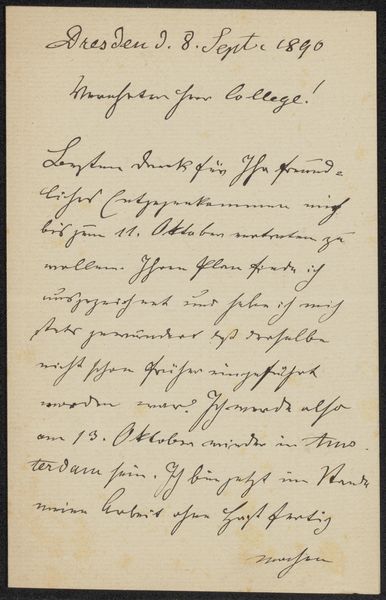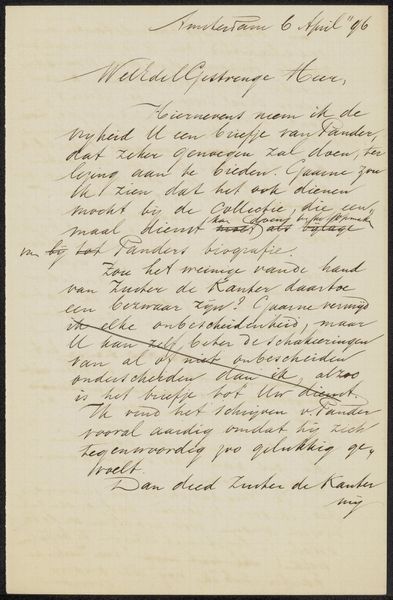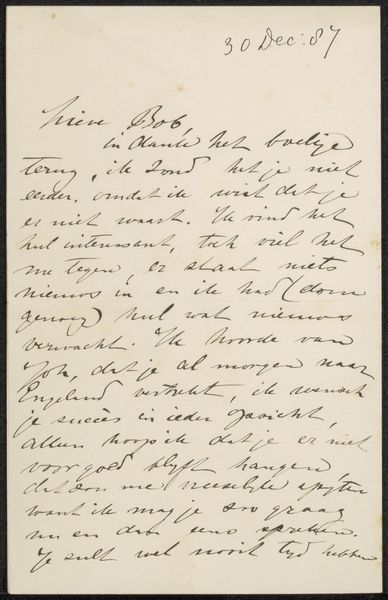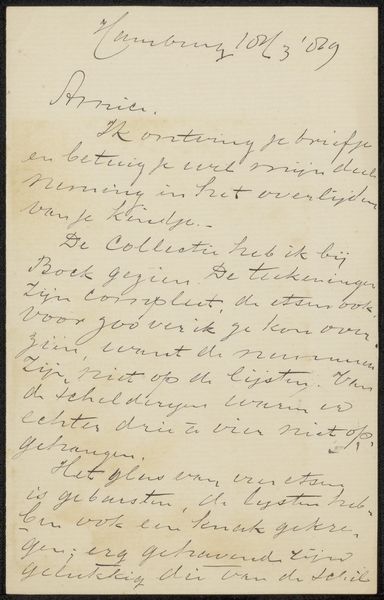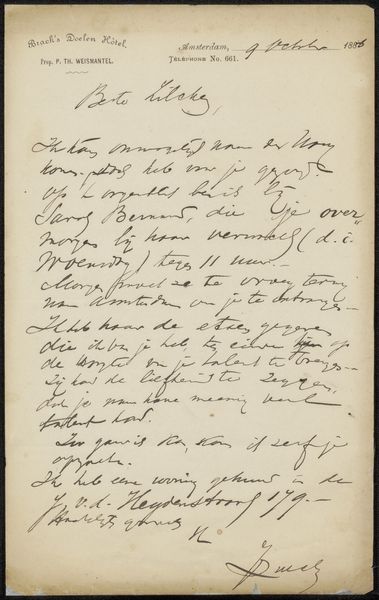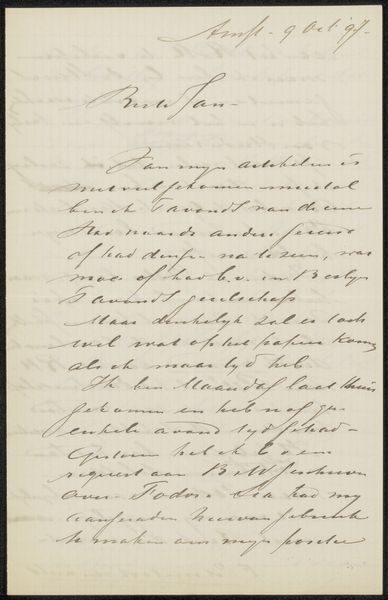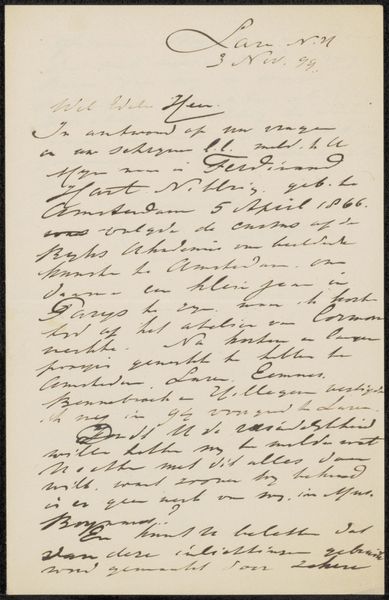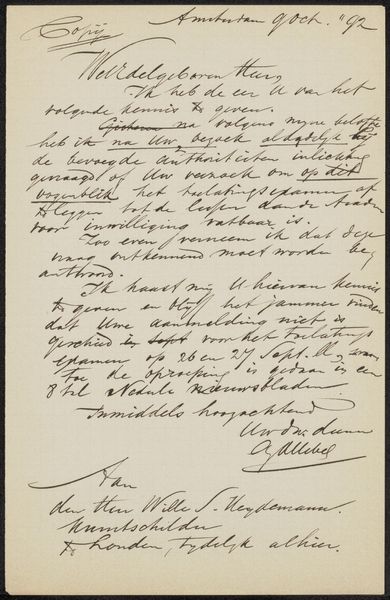
drawing, ink, pen
#
drawing
#
hand-lettering
#
pen drawing
#
old engraving style
#
hand drawn type
#
hand lettering
#
ink
#
hand-drawn typeface
#
ink drawing experimentation
#
pen-ink sketch
#
pen work
#
pen
#
coloring book page
#
calligraphy
Copyright: Rijks Museum: Open Domain
Curator: Let's discuss "Brief aan Philip Zilcken," a drawing created in 1892 by Pieter de Josselin de Jong, here at the Rijksmuseum. Editor: My first impression? It has a rather intimate feel, the delicate ink on paper suggesting a quiet, personal moment. The tight, consistent lettering feels visually comforting. Curator: Indeed. Looking at this letter within its historical context, one is immediately struck by the significance of correspondence during this period. Before the digital age, letter-writing was a crucial tool for social and intellectual exchange. Editor: True, but focus on the visual, please! Observe how the calligraphic style becomes an expressive element in itself. Each word is not just a vehicle for language; the curves, the line weight, the overall texture created by the ink are crucial components. Curator: Agreed. And this goes beyond simple aesthetic pleasure. The very act of carefully forming each letter was, in a sense, performative. The identity of the writer is almost palpable in the very strokes of the pen. Think of the relationship between de Josselin de Jong and Zilcken: how the nuances of their artistic and social circles would have influenced this form of communication. Editor: Note the visual economy. It’s almost austere, but in that constraint, the artist communicates so much through careful attention to detail. The spatial relationships, the balance between text and blank space on the paper, it all points toward considered aesthetic intent. Curator: Thinking about this level of artistry, the letter embodies not only textual information but a performance of identity and social positioning in 19th-century Dutch artistic circles. Editor: In the end, looking beyond its simple utility as a note, it acts almost as a study of form and language. A little poem in ink. Curator: For me, reflecting on the social role this letter plays, its value lies in how it lets us reimagine an era of written communication, colored by power and connection.
Comments
No comments
Be the first to comment and join the conversation on the ultimate creative platform.
